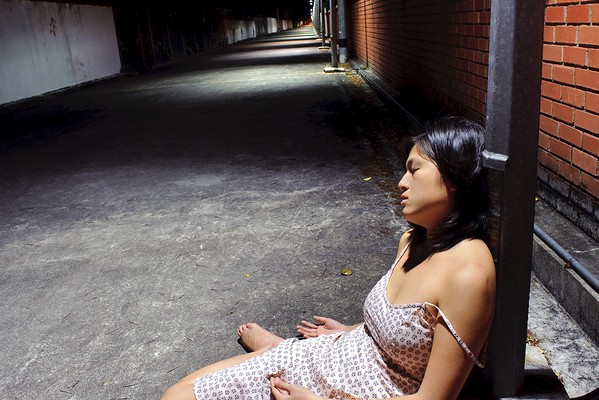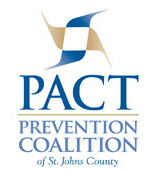Tag Archive: alcohol abuse

YouTube Videos Fail To Show Whole Story
February 25, 2015
YouTube videos of alcohol use by young people fail to show the whole story and can be a dangerous influence on teens. This conclusion is the result of a study conducted by the Center for Research on Media, Technology, and Health, at the University of Pittsburgh and published in the journal Alcoholism Clinical and Experimental Research.
The study’s authors looked at 70 of the most popular YouTube videos regarding alcohol intoxication. Combined, the videos had a total of more than 333.2 million views and the number of “like” designations totaled more than 99 percent compared to less than one percent of “dislikes.” Twenty-four percent of the videos involved the use of motor vehicles.
The problem with the videos, according to the researchers, is that the videos portray alcohol use in a funny or glamorous way without showing any of the negative aspects of alcohol abuse. Negative aspects of alcohol use include, but aren’t limited to; vomiting, sexual assault, car crashes, arrest, and death by alcohol poisoning.
For parents, these videos open up an opportunity to start a dialogue with teens about those negative aspects of alcohol abuse that aren’t portrayed in the YouTube videos.
Read more: Hammered And Heedless: Do Dangerous Drinking Videos Harm Teens?

Do You Know the Law?
December 10, 2010
Do you know what is considered to be legal verses illegal? Do you know what the consequences are if you break the law? Is it a fine, jail time or some other penalty? Many people get so busy with their daily lives that they don’t keep up-to-date on new laws or share with family and friends their knowledge of the laws that they are familiar with. Although sometimes, people innocently think they are sharing information, they may unknowingly share information that is false or outdated.
Ignorance of the law is not a justifiable excuse for breaking the law. In so many situations, it is easy to react without considering the consequences. Learning about the laws in your state will not only help you to be more aware personally, the knowledge you gain can be shared with family and friends to help prevent negative situations from occurring.
Fortunately, several groups of civic minded community members are collaborating together to help educate the public on the laws and consequences in their community. These groups come from the sectors of law enforcement, judicial, education, prevention, and treatment and include agencies, services and advocates.
One such group is PACT Prevention Coalition of St. Johns County. The coalition is comprised of groups of people from diverse disciplines in the community including members who represent: youth, parents, education, business, government, faith-based, media, law enforcement, substance abuse/mental health providers, youth serving agencies, healthcare, civic/volunteer groups, and community residents. The goal of these coalitions is to create safe, healthy and drug-free communities and in turn, making them better places to live. They strengthen the community and its members with technical assistance and training, public policy, media strategies and marketing programs, conferences and special events. Heidi Matheny, Coalition Coordinator for PACT Prevention Coalition is currently compiling a booklet to be given out at the local high schools and colleges. Heidi said ”We wanted to enable and encourage youth to make empowered decisions by taking the time to know and understand the laws while weighing the consequences of their behaviors. This booklet is also intended as a tool for parents.”
The booklet is going to print and the PACT Prevention Coalition is looking to distribute 30,000 copies from this first printing.
Some items that are covered include:
- Crime Defined
- Principal Theory
- Alcohol
- Tobacco
- Parties
- Computer Crimes
- Mandatory Consequences
Many others topics are also included such as potential future obstacles and local resources to contact.
Take time to check in your community to see if this type information is available. In St. Johns County you can go to the website at www.pactprevention.org, click the contact link and request your copy. Join other civic mind people to help make our communities the best they can be.

Be Aware of “Black out in a can” or “Liquid Cocaine?”
December 2, 2010
Lately, there has been much attention given to a new version of alcoholic drinks that are gaining popularity. The specific brands cited are Four Loko, Joose, Max and Torque combine large does of alcohol with caffeine. These drinks are marketed to youth, with colorful packaging and flavors including grape, fruit punch, watermelon, and lemonade. Four Loko is said to contain the alcohol equivalent of up to five beers (12 percent alcohol) and the caffeine of one cup of coffee plus a can of Red Bull. The caffeine buzz delays the ability to feel the effect of the alcohol or monitor their body’s response. Before the drinker is aware, they have consumed several beers at once and are on a caffeine high, increasing the likelihood of alcohol poisoning. Because alcohol poisoning is so frequent after drinking these drinks, the term “black out in a can” has become a common nickname for these alcohol energy drinks.
These drinks first caught the attention of doctors, hospitals, police, and government officials as they began to warn the public of the dangers the drinks pose and tried to force changes in packaging, warnings and content. The containers look attractive and to the unknowing eye could easily mistake the beverage for an energy drink. The terms “liquid cocaine” or “cocaine in a can” are also used as slang for these drinks, because of the high amount of caffeine, taurine and guarana. The risk of caffeine intoxication is high and symptoms after consuming the drink include restlessness, increase in blood pressure, heart rate and heart palpitations. Emergency Room doctors report that patients are coming into hospitals drunk and also complaining that their hearts are pounding out of their chests.
But now, the alarm level has risen, as college and university campuses across the United States are banning the drinks as well. The University of Florida conducted a study published in the journal Addictive Behaviors. The study found that of the patrons exiting bars, those who drank energy drinks mixed with alcohol were three times at risk of leaving a bar highly intoxicated and were four times more likely to intend to drive after drinking than bar patrons who drank alcohol only. “There’s a very common misconception that if you drink caffeine with an alcoholic beverage the stimulant effect of the caffeine counteracts the depressant effect of the alcohol and that is not true,” said study co-author Bruce Goldberger a professor and director of toxicology in the UF College of Medicine. “We know that caffeine aggravates the degree of intoxication, which can lead to risky behaviors.” ABC News interviewed Doctor Mary Claire O’Brien of Wake Forest University on the study she conducted on the effects of combining alcohol and caffeine. Her results showed that students who mix caffeine and alcohol are “twice as likely to be injured, require medical attention, ride with an intoxicated driver, and more than twice as likely to take advantage of someone sexually.”
Colleges are not the only ones to feel the effects. Nickie Gorce, Director of Prevention with EPIC Community Services, has seen a large increase in alcohol-related referrals to her agency. Many of the referrals are for youth and young adults under the legal drinking age of 21. “Their impulsive behavior after consuming these types of drinks would appear to be out of control, which is frequently the result when adolescents or young adults binge drink (5 or more drinks in rapid succession). The increased risk taking behavior such as driving under the influence is an unintended outcome when individuals consume alcohol energy drinks. In addition, the Blood Alcohol Content (B.A.C.) level after consuming just one of these beverages like Four Loko may be twice the legal limit.”
With both the alcohol and caffeine being diuretics, dehydration is another real risk leading to other health complications as well, including a terrible hangover. When the intoxication effects wear off, not only do you have a crash from the high doses of alcohol, there is also a caffeine crash that occurs with most people.
Several states, including Michigan, Washington, Utah, Oklahoma and New York have banned the sale of these drinks and some vendors are voluntarily removing them from the shelves. As the safety concerns mount, the Food and Drug Administration has been reviewing the products and has stated they want the drink in its current state to be removed from shop shelves by December 13.

Alcohol Access and Your Teen – Trust but Verify
March 5, 2009
Your teenage daughter is spending the night at her friend Mary’s house. Mary’s mother seems to be a responsible, law-abiding adult. You’ve met her several times and there is no reason for you to think anything would go wrong. Mary’s dad is involved in charitable organizations. Still, you hesitate – but then think, why not?
The sleepover at Mary’s house seems perfectly innocent. Your daughter and her friend get good grades in school. They haven’t given you any real reason not to trust them. They are good kids. You’ve had the “choices equal consequences” talk with your daughter. And you have to trust your teen sometime, right? You have to let go.
You are trying to be reasonable.
For many parents, this is where the conflict begins. It’s difficult to decide when to hold back and when to let go. But you can’t let your guard down, because teenagers are vulnerable to temptation and peer pressure every day. What happens when…?
Mary’s parents are busy fulfilling their social and community obligations and aren’t paying attention to what your daughter and Mary are doing. They aren’t home, or they have friends visiting, or they are just weary from work, and their guard is down. Or perhaps they wear rose-colored glasses when it comes to Mary and believe that close supervision of the girls isn’t necessary because she would never betray their trust.
The teens head out to a party at John’s house. Maybe they said they were going to the movies, bowling, or just to hang out with John. John’s dad is a “cool” parent. He understands teenagers, likes to have people around and wants to know what goes on with his kids. John’s dad is an involved parent. He is teaching his son to be responsible. He wants John to drink in moderation and to be a responsible drinker. He reasons that John is going to drink alcohol anyway, so why not teach him how to do it responsibly?
So John’s dad buys beer for the party. Not too much, and he sets limits, cautioning John that each teen should have no more than two beers. He stays home to monitor the situation. Everything seems to be going just fine.
But John’s father didn’t consider the following:
- Early alcohol use, independent of other risk factors, strongly predicts the development of alcohol dependence.
- Of all people who ever meet the diagnostic criteria for alcohol dependence in their lifetime, nearly half do so by age 21 and two-thirds by age 25.
- People who reported starting to drink before the age of 15 were four times more likely to also report meeting the criteria for alcohol dependence at some point in their lives (National Institute on Alcohol Abuse and Alcoholism, 2009).
- Compared to youth who wait until they are 21, youth who drink before age 15 are 12 times more likely to be unintentionally injured while under the influence of alcohol, seven times more likely to be in a motor vehicle crash after drinking, and 10 times more likely to get in a physical fight after drinking (National Research Council and Institute of Medicine, 2004).
- Due to differences between the adult brain and the brain of the maturing adolescent, many young drinkers:
- Are able to consume much larger amounts of alcohol than adults before experiencing the negative consequences of drinking, such as drowsiness, lack of coordination, and withdrawal/hangover effects.
- Are particularly sensitive to the positive effects of drinking, such as feeling more at ease in social situations; young people may drink more than adults because of these positive social experiences (NIAAA, 2009).
- Recent evidence suggests adolescent drinking can inflict permanent damage on the developing brain (National Research Council and Institute of Medicine, 2004).These statistics do not take into account the risk that John’s dad is taking; in many states, he can be held criminally liable for providing alcohol to minors on property he owns, leases, or otherwise controls. Civil liability is always an issue; no state makes it legal for an adult to serve alcohol to someone else’s children. But if you aren’t vigilant, a tragedy could occur before you are even aware of the danger your child faces.Strengthen your resolve. Be your teen’s parent, not a friend. Make sure your teen understands that other adults can’t give them permission to drink alcohol. You’ve already said no, and no one else’s parent can overrule you.
Talk to, and listen to, your teen. Maintain an ongoing, open dialogue about underage drinking and the risks involved. Create a code word so that if your teen needs to be picked up early, you’ll do so with no questions asked until the following day, when you are both calm enough to discuss the situation sensibly. Let your teen know that you will not approve any outing without sufficient notice so you can speak to the hosting parent first.
When your teen spends the night at a friend’s house or goes to a party, call the hosting parent to find out the details. Volunteer to chaperone and provide transportation. Make sure the hosting parent shares your concerns about the availability of alcohol and that none will be permitted. Ask how much supervision will be provided.
Limit the amount of time your teen is away from home. Make sure you are awake and alert when the teen returns. Greet your teen with a kiss and a hug so you can observe your child’s physical, mental, and emotional condition.
It’s tempting for parents to relax their vigilance once their children become teenagers. After all, the teens will soon be on their own and beyond their parents’ control. But the teen years are a critical part of your children’s development, and the decisions they make could affect the rest of their lives. This is not the time to let down your guard.
